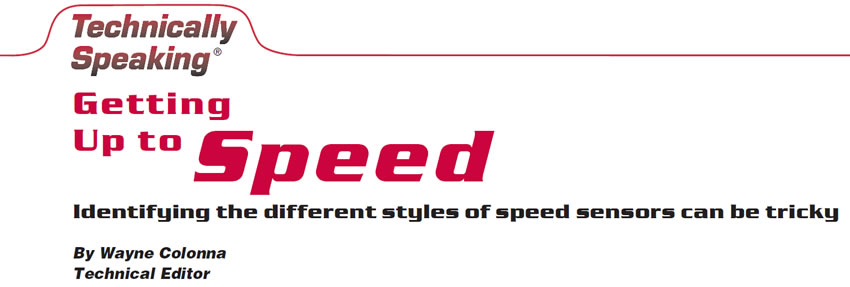Fluid Change Can Cost Big Change ($)
Some of us may remember how in the days of old a C-6 transmission would leave a beautiful filter footprint in the bottom pan. This resulted from the filter opening being too close to the pan. When the pump started sucking, it would pull the pan right up to the filter, and as it vibrated away the filter etched itself into the pan. Of course, that starved the pump and caused premature failure of the transmission.

A Keen Perception of the Obvious
A no-move 1992 Mazda MPV van was towed into a shop, where it was determined that the planets inside the R4A-EL transmission were toasted. One look at the vehicle and you can see why (see Figure 1). This van recently had been involved in a front-end collision that collapsed the oil-cooler line, causing a lack of cooler flow, and there ya go – wasted planets.

Getting VTi Leverage
This transaxle has a bi-directional ratio-control motor (RCM) on top of the valve body (see Figure 1). The RCM indexes with a lever attached to the variable-ratio-control valve in the valve body, as Figure 2 shows. The opposite end of this lever sits inside a pocket of a device called the drive-pulley follower, as shown in Figure 3 from the valve-body case side with the valve body removed.

Moving Forward with No Reverse
It is quite a surprise for a technician to learn that a malfunctioning TCC solenoid could cause a slipping in reverse or loss of reverse with 4L30-E transmissions.
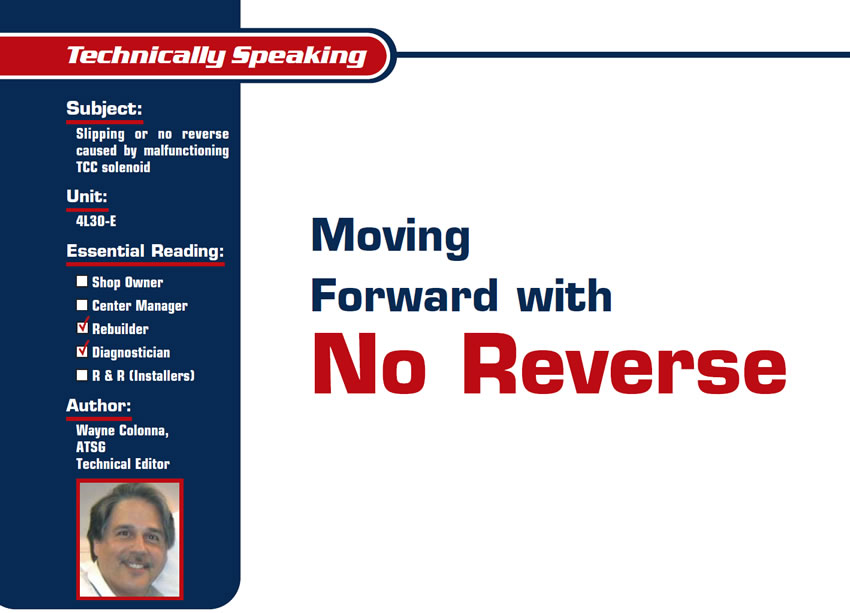
One for the ‘Arc-ives’
Finding the cause of an electrical problem on a Ford Expedition requires some detective work
A 2002 Ford Expedition equipped with a 4.6-liter V-8 and 4R70W transmission came into the shop with a host of solenoid electrical codes.
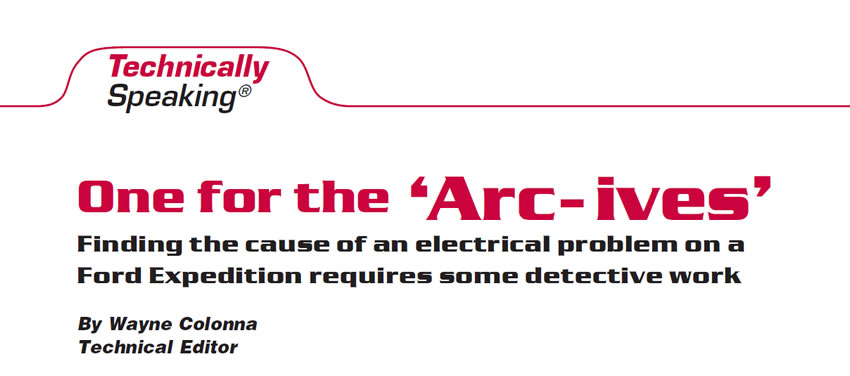
Stroke Choke
The forward-clutch control valve in the AX4N valve body (see Figure 1) plays a large role in the apply and release of the forward clutch (see Figure 2). The valve must be stroked or opened to allow pressure into the forward-clutch circuit to the shift valves and closed or unstroked to block pressure from the circuit.
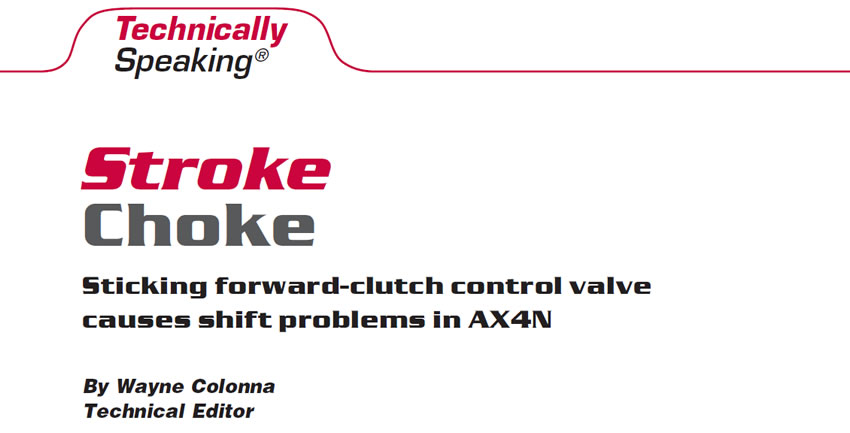
Deceived
One step many technicians take in diagnosing transmissions that have electronically controlled line-rise problems is to unplug the pressure-control solenoid. If the solenoid, pressure-regulator valve and pump are in good working order, line pressure will rise to about 150 to 170 psi at 1,000 rpm in Park. If it rose to only 80-90 psi or didn’t rise at all, this would indicate that a problem existed inside the transmission.

Out of Sight, Out of Mind
From time to time the ATSG tech line receives calls concerning 4L80-E transmissions with a reverse and/or third-gear problem. First thought may be compromised piston seals in the direct-clutch drum, or center-support rings. Perhaps even the center-support feed bolt is loose or cracked.
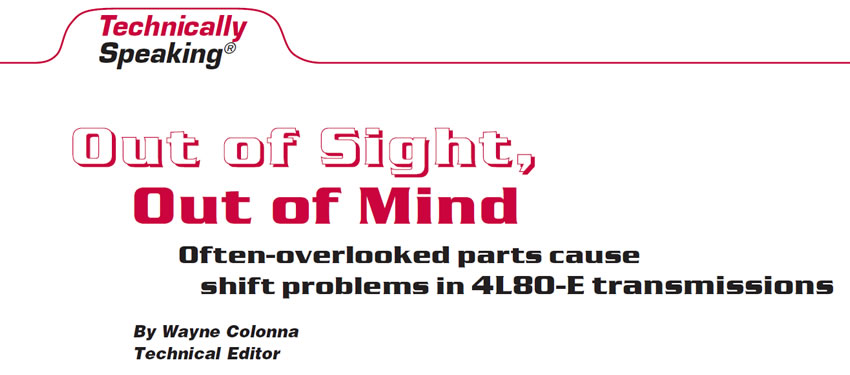
Now, That’s Odd!
We had such a case just recently. We field many calls regarding the Hyundai and Mitsubishi F4A40/50 series transmission. Usual complaints on this unit are that it’s in failsafe or there’s a 2-3 shift flare. But on one particular day, we received three tech calls in a row with an out-of-the-ordinary problem. Two were regarding a 2001 Dodge Stratus with a 3.0-liter V-6 engine, the other a 2002 Chrysler Sebring with the same 3.0-liter V-6 engine.

Steptronic, Tiptronic, Geartronic – Ah, What’s the Difference?
I am always amused by the many different names we see that are used to describe basically the same device. For example, we have a pressure-control solenoid, or we could call it an EPC (electronic pressure-control) solenoid, a force motor or a linear solenoid. We have the same thing with what Chrysler has called an Autostick, which now is being referred to as a J Gate, Steptronic, Tiptronic or Geartronic – how Ironic (see Figure 1).

Gear Head
Our instructor began by teaching us that a simple planetary gear set consists of 1) a center sun gear, 2) a carrier with three or more pinion gears that are free to rotate on their pins around the sun gear and 3) the internal ring gear, which meshes with the pinion gears. Then he started to say, “If you hold the internal gear stationary and drive the sun gear, you will see the pinions drive the carrier in the same direction as the sun gear but at a reduced speed with increased power.” This is where some of my fellow classmates started to get bored.

Getting Up to Speed
There are basically three different styles of speed sensors a transmission diagnostician has to deal with: a reed switch, an AC generator (pulse generator) and a Hall-effect sensor.
